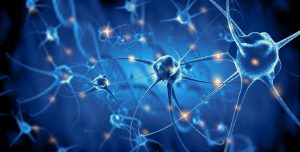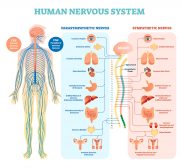Table of Contents
Definition
noun
plural: phagolysosomes
(cell biology) A cytoplasmic body that forms from the fusion of phagosome and lysosome
Details
Overview
Phagocytosis is the process of engulfing and ingestion of particles by the cell or a phagocyte. In mammals, a phagocyte pertains to the immune cells specializing in the engulfing and destroying foreign particles, as well as in removing waste particles and cell debris. Examples of phagocytes are macrophages, neutrophils, and dendritic cells. These cells phagocytose the target particulate that needs to be degraded by forming a phagosome (a food vacuole) that can fuse with the lysosome to form a phagolysosome.
Characteristics
A phagolysosome is a cytoplasmic structure inside the phagocytes of mammals. A phagocyte refers to the immune cells specializing in the engulfing and destroying foreign particles, as well as in removing waste particles and cell debris. Examples of phagocytes are macrophages, neutrophils, and dendritic cells. These cells engulf a particulate that is subject for degradation. The ingested material is encased by a portion of the cell membrane of the phagocyte and then pinches off, forming a phagosome. Later, the phagosome fuses with the lysosome, forming a phagolysosome. The fusion is regulated by a Rab protein. This protein provides a site for material exchanges between the phagosome and the lysosome. The phagolysosome contains reactive oxygen species and reactive nitrogen species as well as hydrolytic enzymes that are essential for its degradative function. Inside the phagolysosome is an acidic environment because of its proton pumps (v-ATPases) that transport H+ across the membrane. Its acidity further aids in the degradation of ingested particulate, e.g. a bacterial cell, by denaturing its protein component. The phagolysosomes of dendritic cells, though, are not as acidic as those of macrophages and neutrophils. Thus, of the three phagocytes, the dendritic cells have weaker bactericidal phagolysosomes.
Biological functions
The phagolysosome is essential for providing immune protection against bacteria, parasites, and other pathogens. It is also involved in the degradation and therefore the removal of senescent cells, apoptotic cells, and cellular fragments.
Common biological reactions
Common biological reactions
Phagocytosis is a biological process whereby a foreign body such as a pathogen can be destroyed. It is also the means to clear tissues off from senescent cells, apoptotic cells, dying cells, and unwanted cellular fragments.
The phagocytic pathway begins in the recognition or identification of a foreign body or a worn-out cellular particle by the phagocyte. The phagocyte engulfs the particulate by taking it in. The cell encases the ingested material with its cell membrane and then pinches off. This membrane-bound sac containing the ingested particulate is now referred to as a phagosome. The nascent phagosome then undergoes maturation to become a late phagosome that can fuse with the lysosome. Maturation of the nascent phagosome into a late phagosome entails a drop of pH (from 6.5 to 4) via its vacuolar proton pumps. A mature phagosome can also be characterized by having protein markers (e.g. RAB7) and hydrolytic enzymes. The phagosome moves along the microtubule of the cell’s cytoskeleton to fuse with certain endosomes and/or with the lysosome to have its contents processed for disposal. At this point wherein the phagosome fuses with the lysosome is called a phagolysosome. The hydrolytic enzymes from the lysosomes degrade the particulate inside. Then, the digested particles are either released extracellularly via exocytosis, or released intracellularly to undergo further processing.
Supplementary
Synonym(s)
- endolysosome
Further reading
See also
© Biology Online. Content provided and moderated by Biology Online Editors







